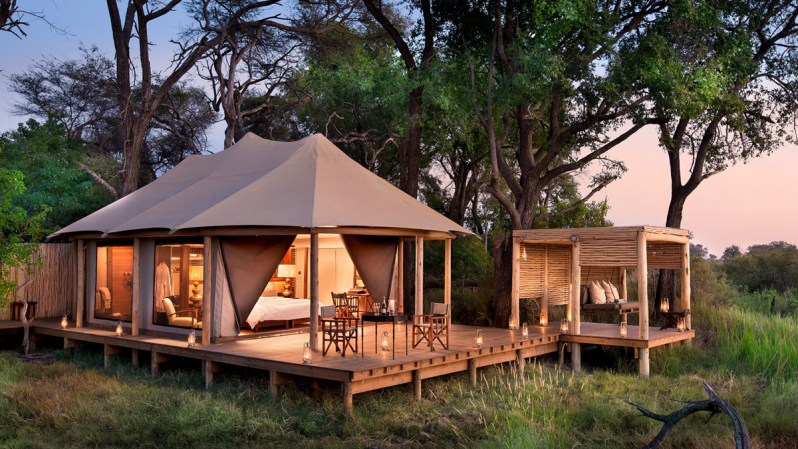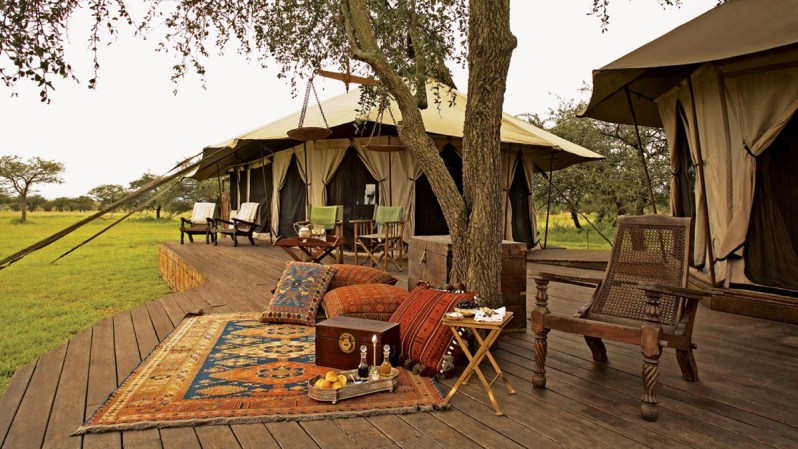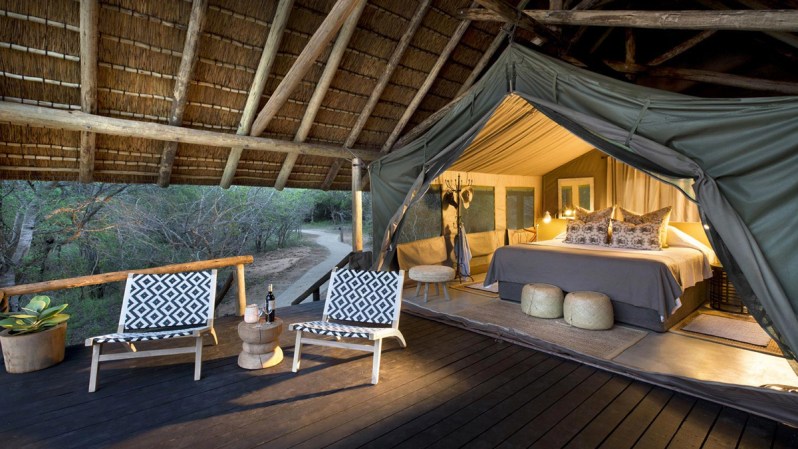Africa offers some of the best wildlife viewing opportunities in the world. While the “big five” — lions, elephants, rhinos, buffalo, and leopards — are arguably the most sought after on a safari, there is an abundance of other species that make a trip to Africa unforgettable. You can dial the experience up a notch by glamping at a luxury African safari camp at Tanzania’s Serengeti, Kenya’s Masai Mara, the Okavango Delta in Botswana, or Kruger National Park in South Africa, most of which are coordinated by &Beyond, a unique travel company. (And before you head out, read some of our tips for first-timers.)
Nxabega Okavango Tented Camp (Botswana)

Nestled under the canopy of a dense ebony forest, this destination is open to the expansive Okavango Delta. Guests can explore the lagoons and channels of the Delta and the Okavango floodplains during safaris, bush walks, mokoro (dugout canoe) rides, and powerboat cruises. Nxabega features nine tented suites for a rugged yet elegant experience in a breathtaking setting. Additional amenities include indoor and outdoor dining areas, private meals, and a swimming pool
Kichwa Tempo Tented Camp (Kenya)

Situated along the Sabaringo River on the plains of the Masai Mara, Kichwa Tempo offers total seclusion and abundant wildlife. Visitors are invited to experience game drives, walks along the Mara River, early morning hot air ballooning, and seasonal views of migrations. Kichwa Tempo has three different kinds of tents to choose from. Luxury facilities include a massage room for relaxing after a long day exploring and a swimming pool that overlooks the the Mara.
Singita Sabora Tented Camp (Tanzania)

The remote Singita Sabora sits directly in the path of the great wildebeest migration that transverse the Serengeti. Campers can participate in twice-daily game drives in open safari vehicles, as well as nature walks, mountain biking, and hot-air balloon rides. Nine luxurious tents, each with its own private deck, provide vistas of the Grumeti Reserve. Guests can also indulge in spa treatments, dips in a heated pool, and delicious dinners under lantern-lit trees.
Tanda Tula Safari Camp (South Africa)

In operation since 1976, Tanda Tula is located in the heart of the Timbavati Private Nature Reserve, part of the Greater Kruger National Park (about fours hours outside of Johannesburg). Tanda Tula offers two options for its guests: the Field Camp and the Safari Camp. The more traditional Field Camp, is touted by the company as one of the most authentic “glamourous camping” experience in South Africa and features four explorer tent setups, each with its own outdoor bathroom and hot water bucket shower. The camp is relocated throughout the season depending on game activity and each tent features its own.
In contrast, the Safari Camp, located beneath beneath enormous trees along the banks of the Nhlaralumi Riverbed is stationary. Each of the 12 luxury tents has an en suite bathroom and outdoor shower, complimentary mini bars, and private decks.


